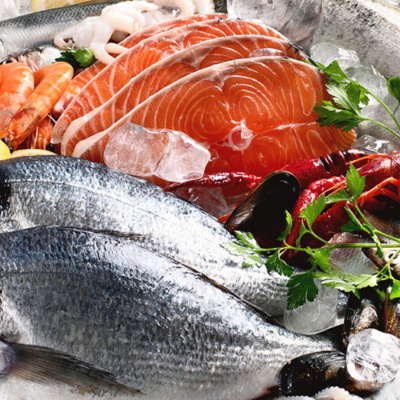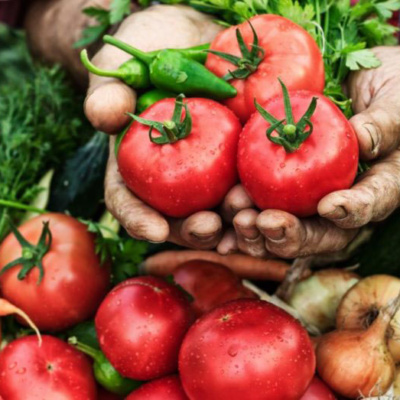Top of mind news
The 3 Customers Your Restaurant Needs, and How to Find Them
Why so many restaurants are declaring bankruptcy
DC Council officially overturns Initiative 77, killing minimum-wage increase
How technology, consumer habits, industry dynamics are changing the future of food
The Farm
Poultry
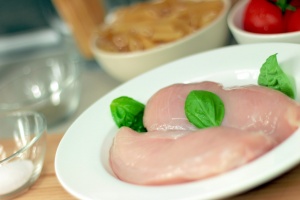 For the week ending October 6th, chicken production fell .2% but was 3.9% larger than a year ago. Part of the year-over-year increase was due in part to notably heavier chicken weights over the same week in 2017. The six-week total of chicken output stands at 1.3% versus 2017. The USDA is estimating chicken production from this month through March to be up only 1.9% year-over-year. This factor, plus current chicken breast prices being at a notable discount to tender prices, could temper the seasonal downside potential for the chicken breast markets. Since 2013, the average move for the ARA Chicken Tender Index during the next eight weeks was down 10.7%. History suggests that chicken wing prices have already hit their seasonal top.
For the week ending October 6th, chicken production fell .2% but was 3.9% larger than a year ago. Part of the year-over-year increase was due in part to notably heavier chicken weights over the same week in 2017. The six-week total of chicken output stands at 1.3% versus 2017. The USDA is estimating chicken production from this month through March to be up only 1.9% year-over-year. This factor, plus current chicken breast prices being at a notable discount to tender prices, could temper the seasonal downside potential for the chicken breast markets. Since 2013, the average move for the ARA Chicken Tender Index during the next eight weeks was down 10.7%. History suggests that chicken wing prices have already hit their seasonal top.
Beef
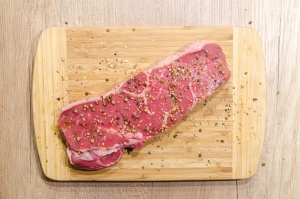 Beef output last week fell .4% but was 3.2% better than the same week in 2017. Plentiful near slaughter ready cattle supplies are likely to boost beef production in the coming weeks. But, recent weather challenges in the Midwest may equal lighter cattle weights which could limit projected year-over-year gains in beef output this winter. Beef demand has picked up recently with the four-week total of forward sales 6.9% higher than last year. Wholesale domestic 50% and 90% beef trim prices are below year ago levels which should encourage retail feature activity and support prices. September retail ground beef prices were up 1% from the prior year and were the highest for the month since 2015.
Beef output last week fell .4% but was 3.2% better than the same week in 2017. Plentiful near slaughter ready cattle supplies are likely to boost beef production in the coming weeks. But, recent weather challenges in the Midwest may equal lighter cattle weights which could limit projected year-over-year gains in beef output this winter. Beef demand has picked up recently with the four-week total of forward sales 6.9% higher than last year. Wholesale domestic 50% and 90% beef trim prices are below year ago levels which should encourage retail feature activity and support prices. September retail ground beef prices were up 1% from the prior year and were the highest for the month since 2015.
Pork
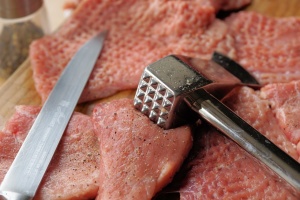 Pork production last week declined .6% and was 1.8% smaller than a year ago. Available hog supplies have been spotty due to the recent hurricanes in the Southeast. Still, larger hog numbers are expected in the coming weeks. The USDA is forecasting Q4 and Q1 (’19) combined pork output to be 4.4% more than a year ago. This should weigh heavy on the pork markets. But, there have been a few new cases of African swine fever reported in China. If this problem persists, it could boost U.S. pork exports which have already been historically strong.
Pork production last week declined .6% and was 1.8% smaller than a year ago. Available hog supplies have been spotty due to the recent hurricanes in the Southeast. Still, larger hog numbers are expected in the coming weeks. The USDA is forecasting Q4 and Q1 (’19) combined pork output to be 4.4% more than a year ago. This should weigh heavy on the pork markets. But, there have been a few new cases of African swine fever reported in China. If this problem persists, it could boost U.S. pork exports which have already been historically strong.
The sea
Seafood
 The salmon markets continue to trade near year ago levels. This is despite strong U.S. imports in August. During the month, the U.S. imported 19.8% more salmon than the previous year. With the U.S. dollar expected to remain relatively inflated into 2019, this should only encourage salmon imports. Thus, the upside price risk in salmon may only be modest.
The salmon markets continue to trade near year ago levels. This is despite strong U.S. imports in August. During the month, the U.S. imported 19.8% more salmon than the previous year. With the U.S. dollar expected to remain relatively inflated into 2019, this should only encourage salmon imports. Thus, the upside price risk in salmon may only be modest.
The GardeN
Produce
 The chief lettuce harvest area is shifting to Huron, California which is causing supplies to build. Iceberg lettuce shipments last week rose .2% and were 27% bigger than the same week last year. History does suggest that some support could come to lettuce prices as the principal production region transitions to the Salinas, California area next month. Romaine lettuce prices have averaged above October during November in seven of the last eight years. The Idaho potato markets remain deflated but the downside price risk from here is likely nominal.
The chief lettuce harvest area is shifting to Huron, California which is causing supplies to build. Iceberg lettuce shipments last week rose .2% and were 27% bigger than the same week last year. History does suggest that some support could come to lettuce prices as the principal production region transitions to the Salinas, California area next month. Romaine lettuce prices have averaged above October during November in seven of the last eight years. The Idaho potato markets remain deflated but the downside price risk from here is likely nominal.
The Kitchen Sink
Dairy
 The large spread between CME cheese blocks and barrels has continued. Demand is starting to shift out of cheese barrels into blocks as consumers temper processed cheese consumption. This could be a longer-term trend which may cause a historically large premium in cheese blocks to persist. That said, history signals that the spread also suggests that the upside price risk in cheese blocks from here should only be modest. The butter market remains range-bound. Butter demand has been solid, but stocks are adequate. Modestly lower butter prices are anticipated later this fall.
The large spread between CME cheese blocks and barrels has continued. Demand is starting to shift out of cheese barrels into blocks as consumers temper processed cheese consumption. This could be a longer-term trend which may cause a historically large premium in cheese blocks to persist. That said, history signals that the spread also suggests that the upside price risk in cheese blocks from here should only be modest. The butter market remains range-bound. Butter demand has been solid, but stocks are adequate. Modestly lower butter prices are anticipated later this fall.
Grains
 Heavy precipitation and snow in some parts of the Midwest have delayed the corn and soybean harvests as of late. The corn harvest is still on schedule while the soybean harvest is behind. Improving weather should cause the harvest to improve for both in the coming weeks. This could weigh on the markets into early November.
Heavy precipitation and snow in some parts of the Midwest have delayed the corn and soybean harvests as of late. The corn harvest is still on schedule while the soybean harvest is behind. Improving weather should cause the harvest to improve for both in the coming weeks. This could weigh on the markets into early November.
Oil
 Natural gas prices have firmed, and last week nearby futures hit the highest level since January. Earlier than normal cold temperatures have hit the Midwest, boosting natural gas heating needs. Natural gas prices usually remain firm during Q4.
Natural gas prices have firmed, and last week nearby futures hit the highest level since January. Earlier than normal cold temperatures have hit the Midwest, boosting natural gas heating needs. Natural gas prices usually remain firm during Q4.



